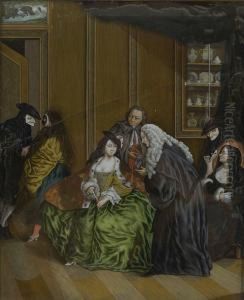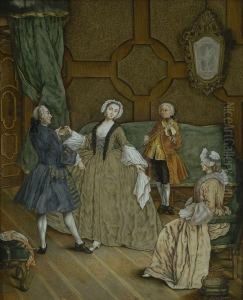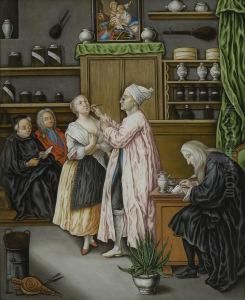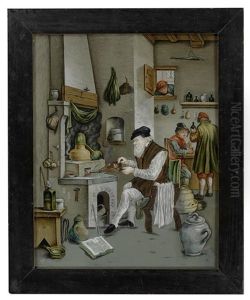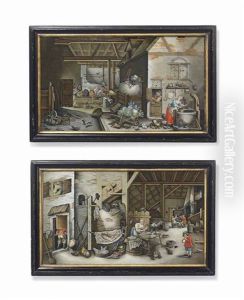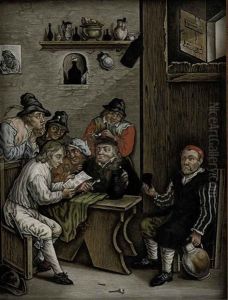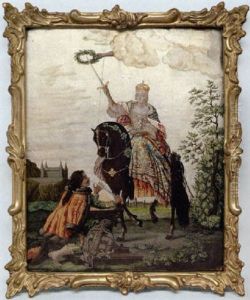Nikolaus Michael Spengler Paintings
Nikolaus Michael Spengler was a German artist born in 1700, known for his contributions to the art world as a painter and sculptor during the Baroque and Rococo periods. His work was predominantly centered in Germany, where he spent most of his life honing his craft and creating pieces that would come to be appreciated for their intricate details and emotional depth.
Spengler's early life was marked by an immersion in the arts, likely influenced by the cultural vibrancy of Germany during the 18th century. He received his initial training from local artists, which was a common practice at the time. This foundational period was crucial for Spengler, as it allowed him to explore various mediums and techniques, eventually leading him to develop a distinct style that blended elements of both the Baroque and Rococo movements. The Baroque influence in his work is noted for its dramatic use of light and shadow, while the Rococo elements are seen in the playful themes and ornate details that became signatures of his work.
Throughout his career, Nikolaus Michael Spengler was commissioned to produce a variety of works, including religious and secular paintings, sculptures, and decorative pieces for churches and aristocratic residences. His ability to navigate both religious and secular themes with equal adeptness made him a favored artist among the clergy and nobility alike. Spengler's religious works often depicted biblical scenes and saints with a profound sense of emotion and humanity, making them accessible and relatable to viewers. On the other hand, his secular pieces frequently captured the leisure and opulence of Rococo society with a delicate, yet vibrant, touch.
Despite his success, detailed records of Spengler's life and works are somewhat limited, which is not uncommon for artists of his time. Nevertheless, the pieces that do survive serve as a testament to his skill and artistic vision. Spengler's contributions to the art world were recognized by his contemporaries, and his legacy has endured, with his works being studied and appreciated for their artistic merit and historical significance.
Nikolaus Michael Spengler passed away in 1767, leaving behind a body of work that continues to be celebrated for its beauty and craftsmanship. His art remains an important part of the narrative of German Baroque and Rococo art, reflecting the cultural and artistic transitions of the 18th century. Spengler's ability to blend the dramatic intensity of the Baroque with the lighthearted elegance of the Rococo has cemented his place in art history as a master of his craft.
